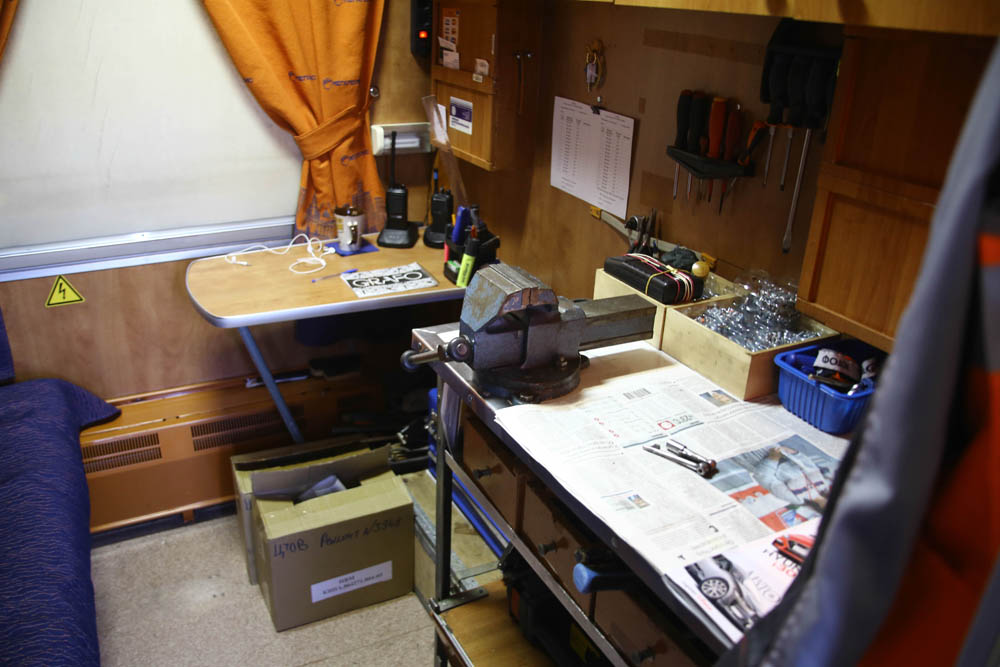
In conjunction with the workshop of an electrician.
A head coach is a kind of office inside a train. The chief of the train, the train electrician, go to it, there is a radio compartment (this is the server room of a modern train), there can be a compartment for employees of the Ministry of Internal Affairs and a compartment for a disabled person and an accompanying person with the opportunity to call in a wheelchair. There is a shower in the head carriage (initially for staff, but passengers can also visit it for free or for little money, depending on the train).
There is the usual compartment for passengers in the head carriage, and they are often followed by a real hunt. Because experienced travelers know that where, where, namely at the headquarters, everything will definitely be in order with the service, tea and peace of mind on the road. Perhaps, except for one day a year - the eve of the Day of the railwayman.
Let's walk along the Megapolis headquarters car (Moscow-St. Petersburg trains, one of the best trains in the country according to passenger reviews). Since this is a private train, the head car was slightly modified in comparison with the usual one.
What type of car is this?
Staff car - a separate type of car. Such a car is made from a conventional docked car, but a number of changes are made.
Here is the rear vestibule of a regular car (more precisely, here it is a restaurant car next to the staff car, but the vestibule is typical here), pay attention to the width:
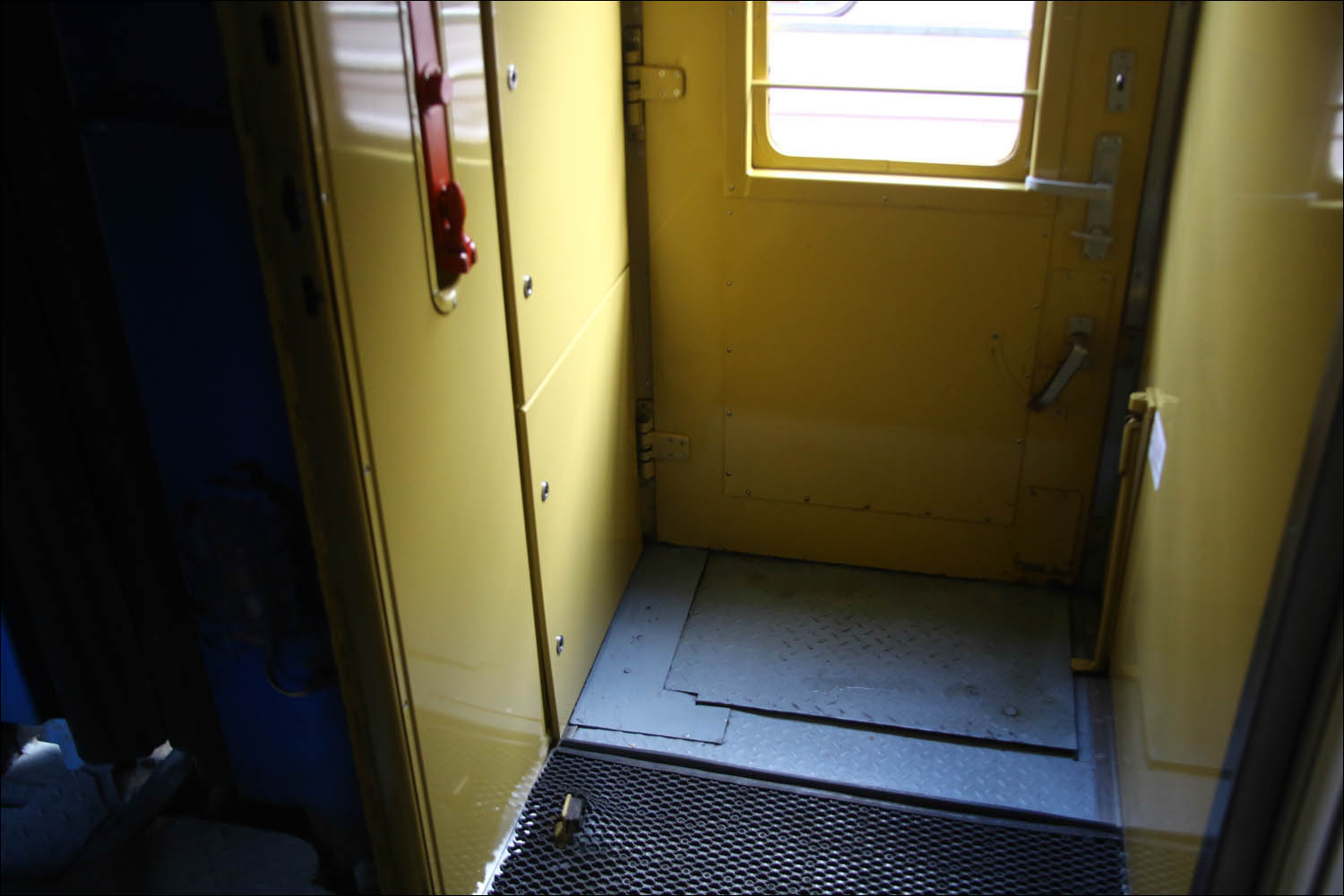
And here is the rear vestibule of the staff carriage:
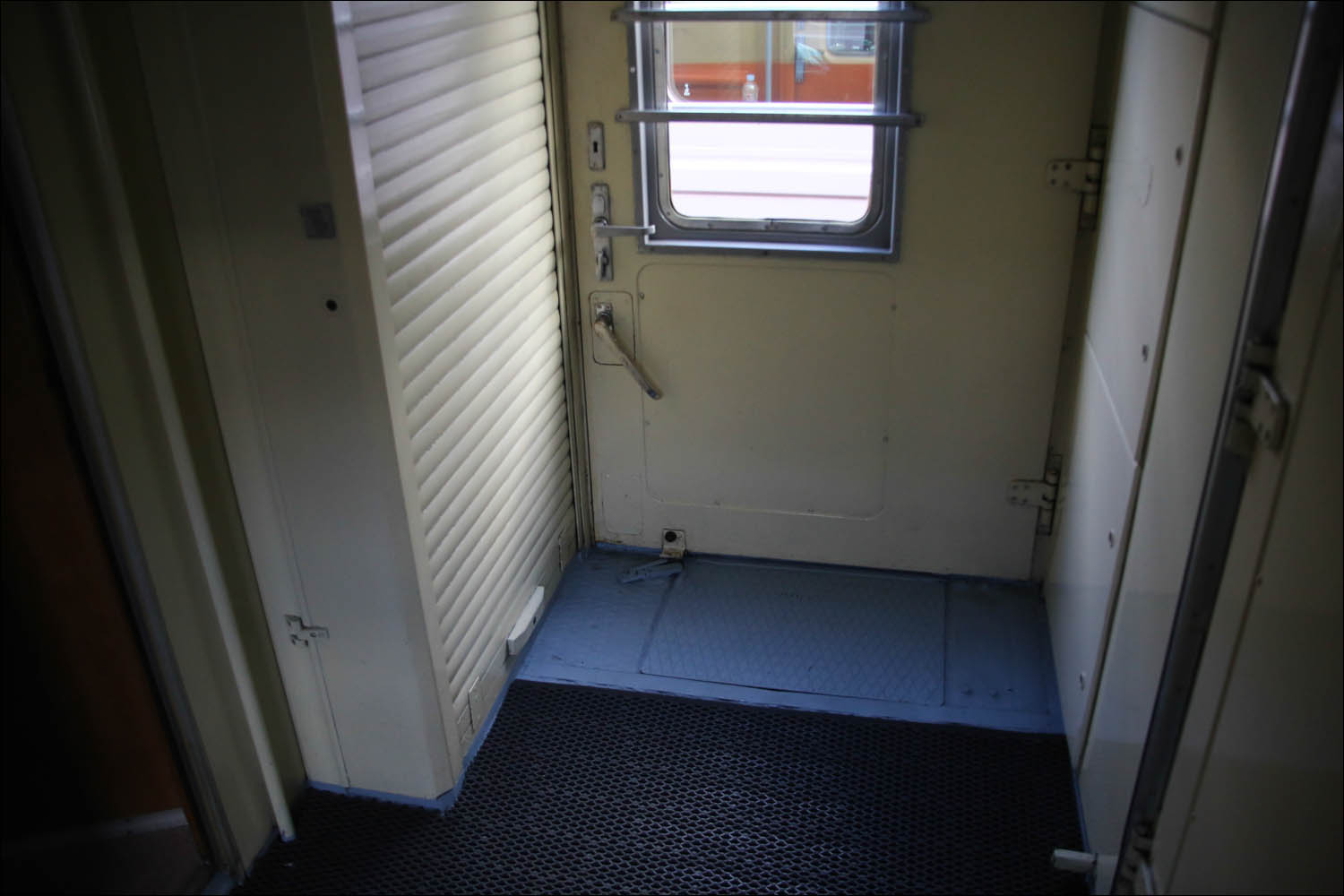
The door itself and the passage are wider. This is necessary in order to be able to call on the train in a wheelchair or bring someone on a stretcher. Immediately further there will be a block intended for the disabled person and accompanying person:
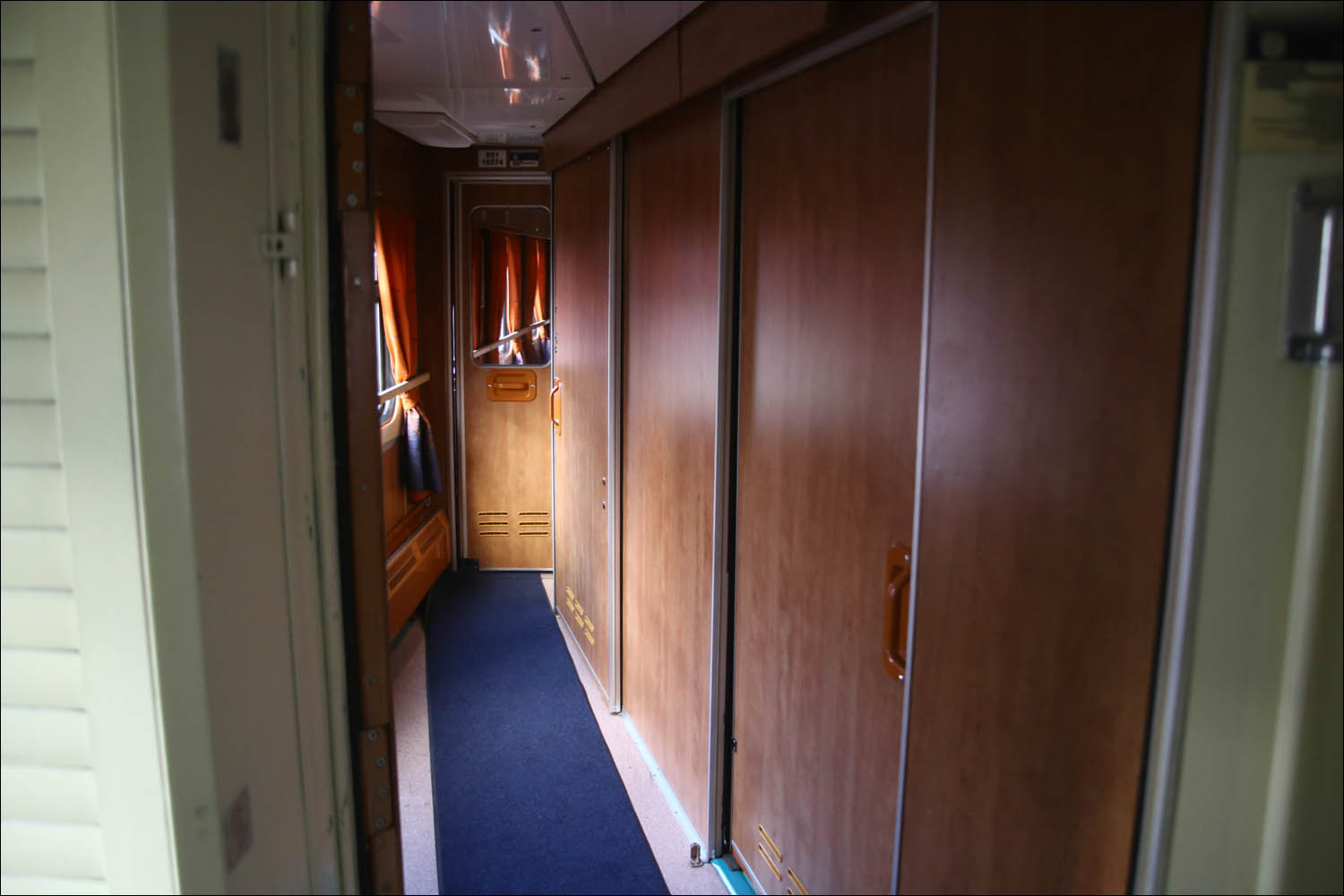
There is a huge toilet:
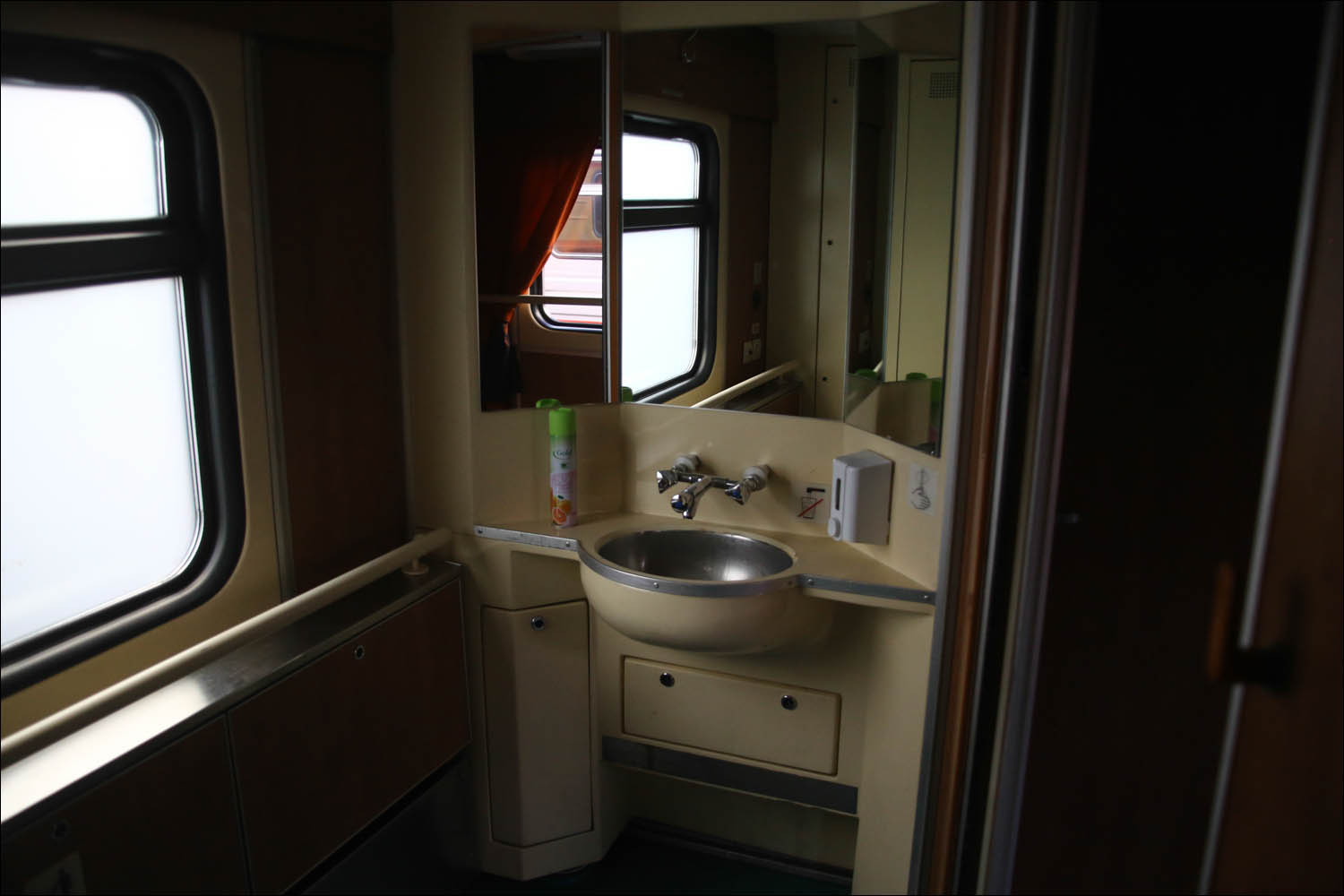
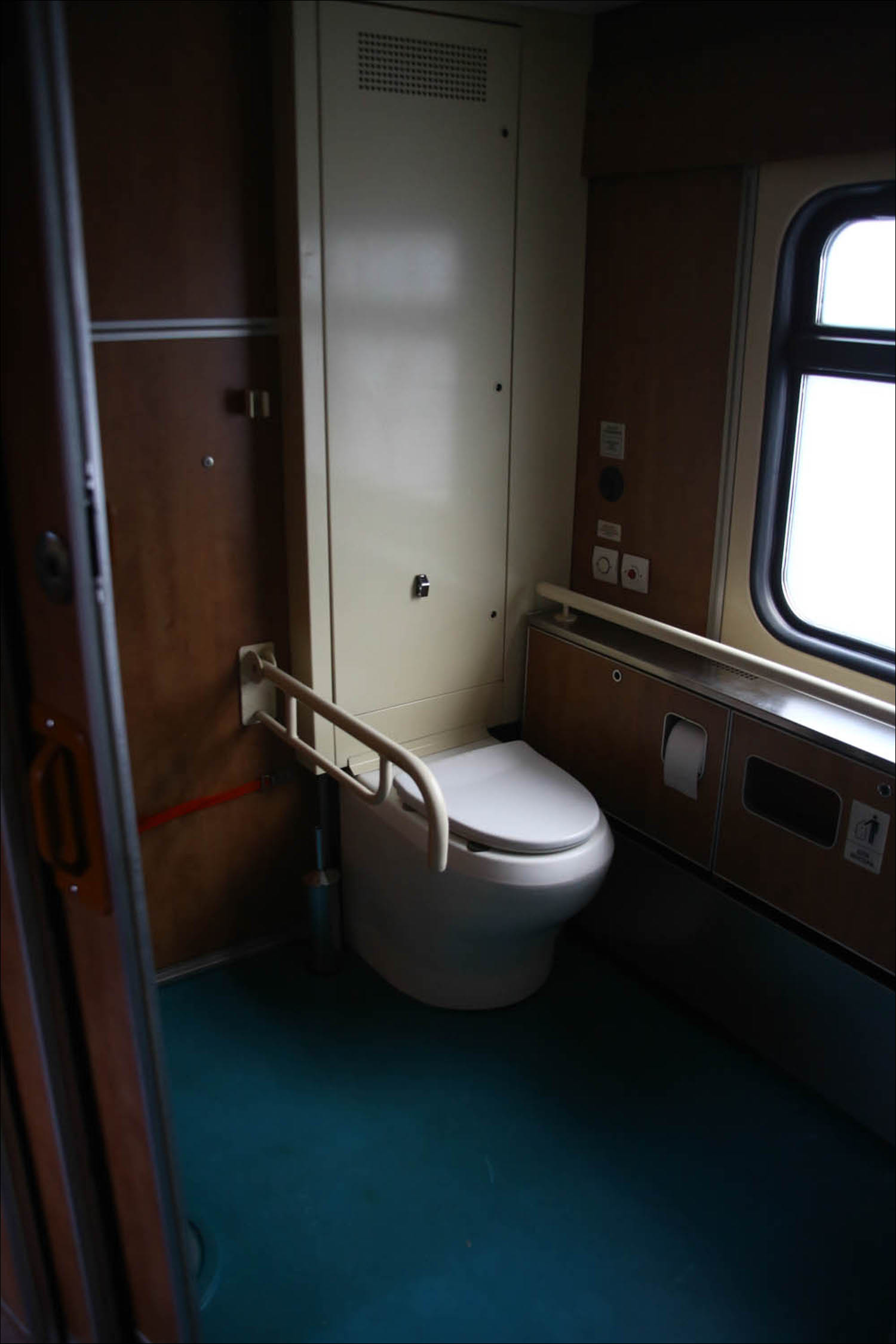
And an enlarged compartment with a wide entrance:
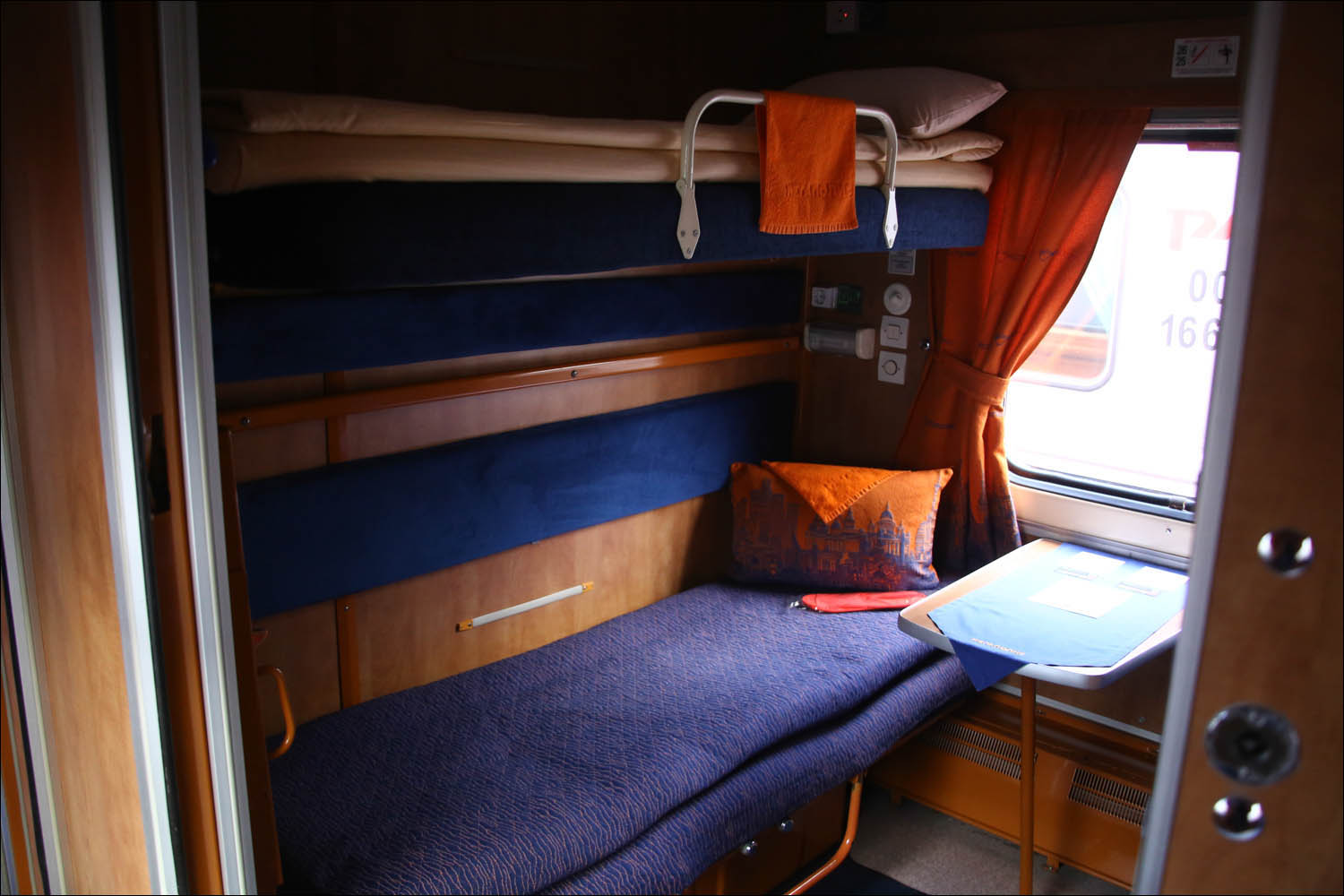
An extra display is made right in the compartment so that the passenger does not get up again when he wants to see the status of the toilet or time:

One photo above you see the light control, the call of the conductor and the outlet near the window on the lower shelf. On the other side of the shelf there is the same set - this is so that the person does not stretch if necessary:
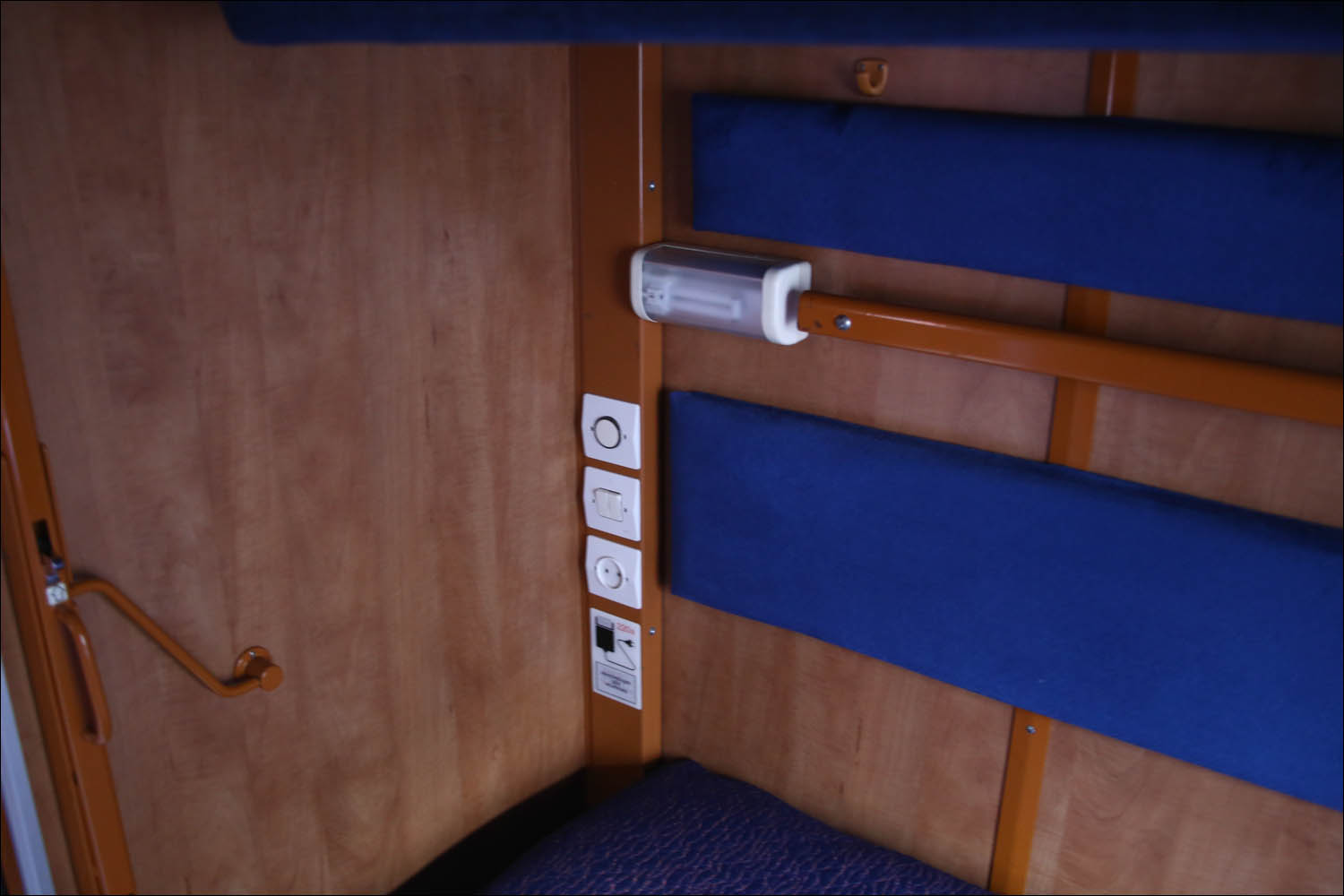
Critical indicators are duplicated in Braille:

Only a disabled person can ride in this compartment. Not necessarily with a wheelchair, but necessarily with a document confirming its status. That is, they simply will not sell a ticket to a passenger in such a compartment: you need to buy a ticket in advance. On the other hand, any document on disability is suitable, including hearing, vision, or others. It turned out that it is easier to do so than to maintain and update the rules of who can and cannot be in such a compartment.
In practice, this compartment is not used on every flight, and loading heavy things into it is very convenient, so there is often a kind of warehouse there. For example, there may be transported spare parts or other goods that must be delivered to the carrier itself from one formation point or depot to another.
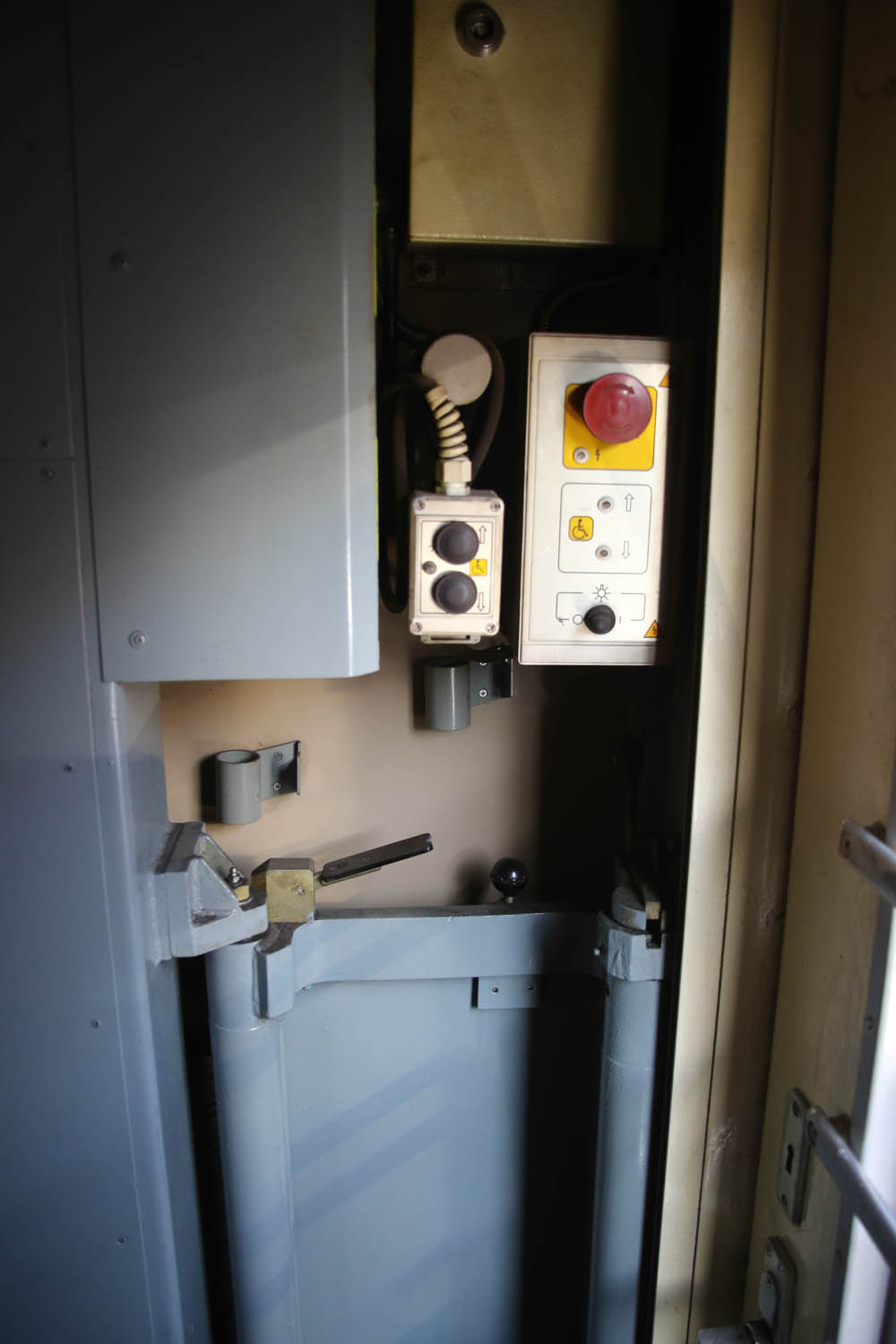
In the vestibule there is a lifting device (retractable ramp) so that you can safely call the train from the platform.
Go ahead!
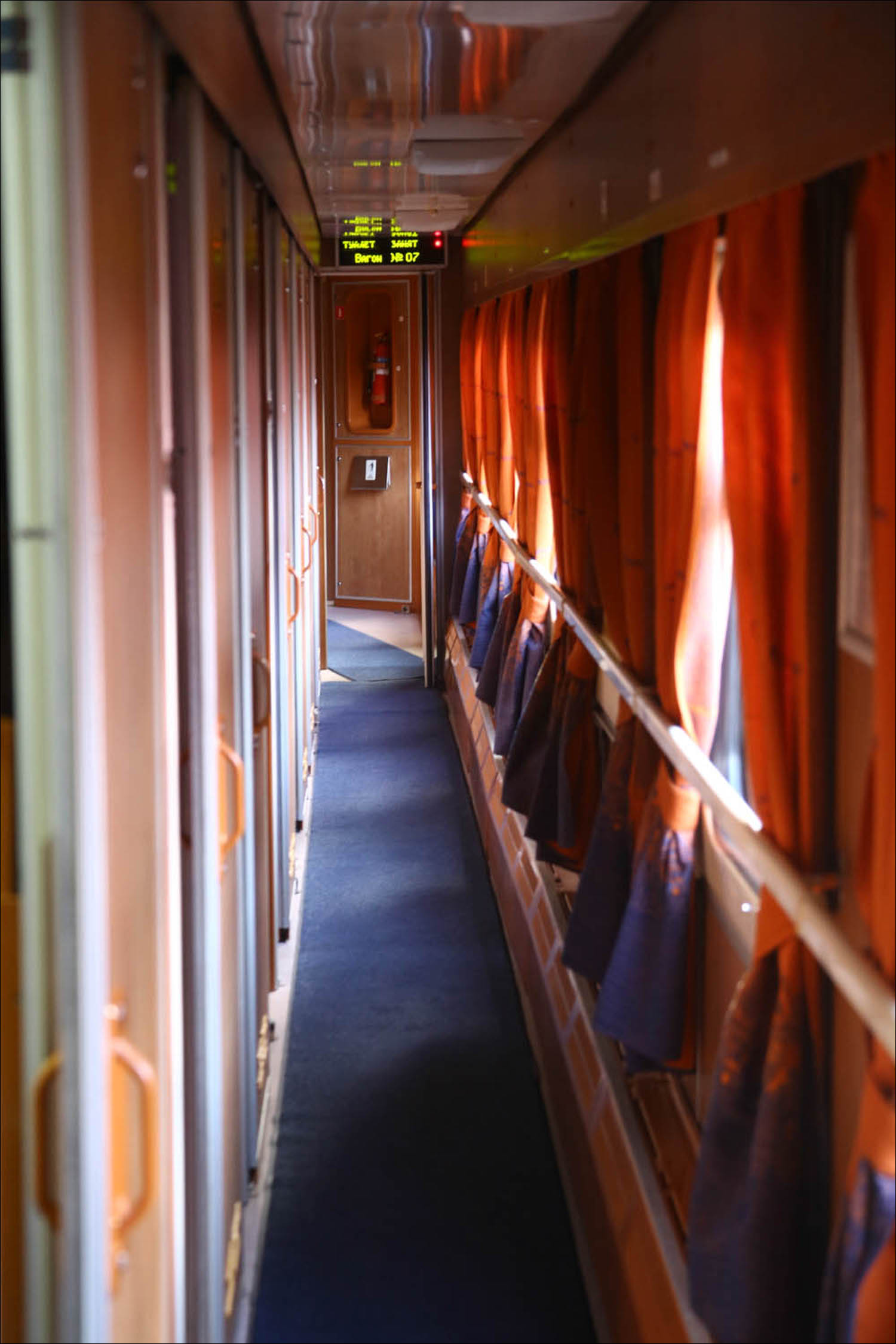
Here's the radio coupe:

The printer is for road signs.
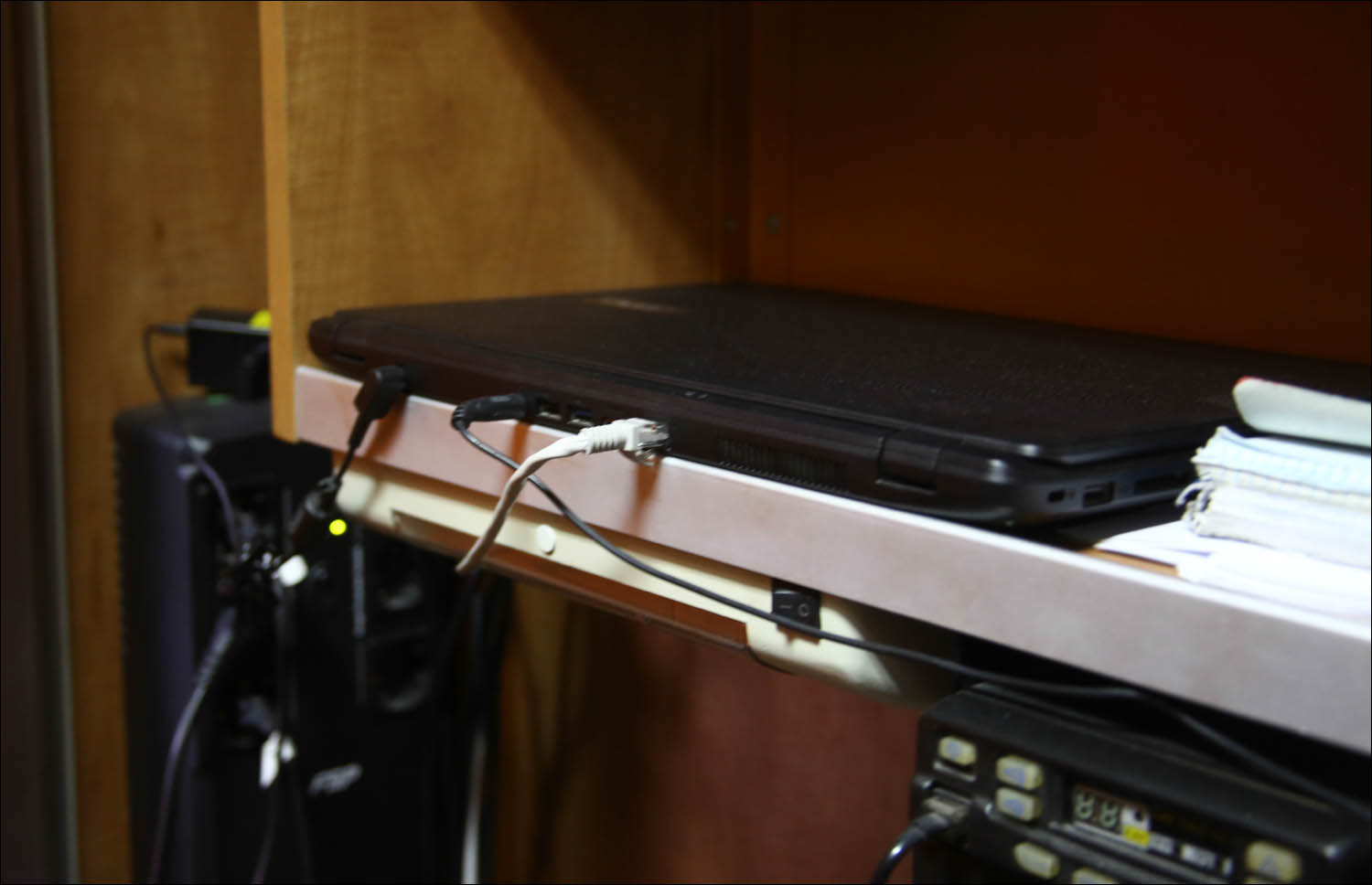
This laptop serves as a media server, it stores the content of the on-board broadcast network (movies for TVs in a compartment).
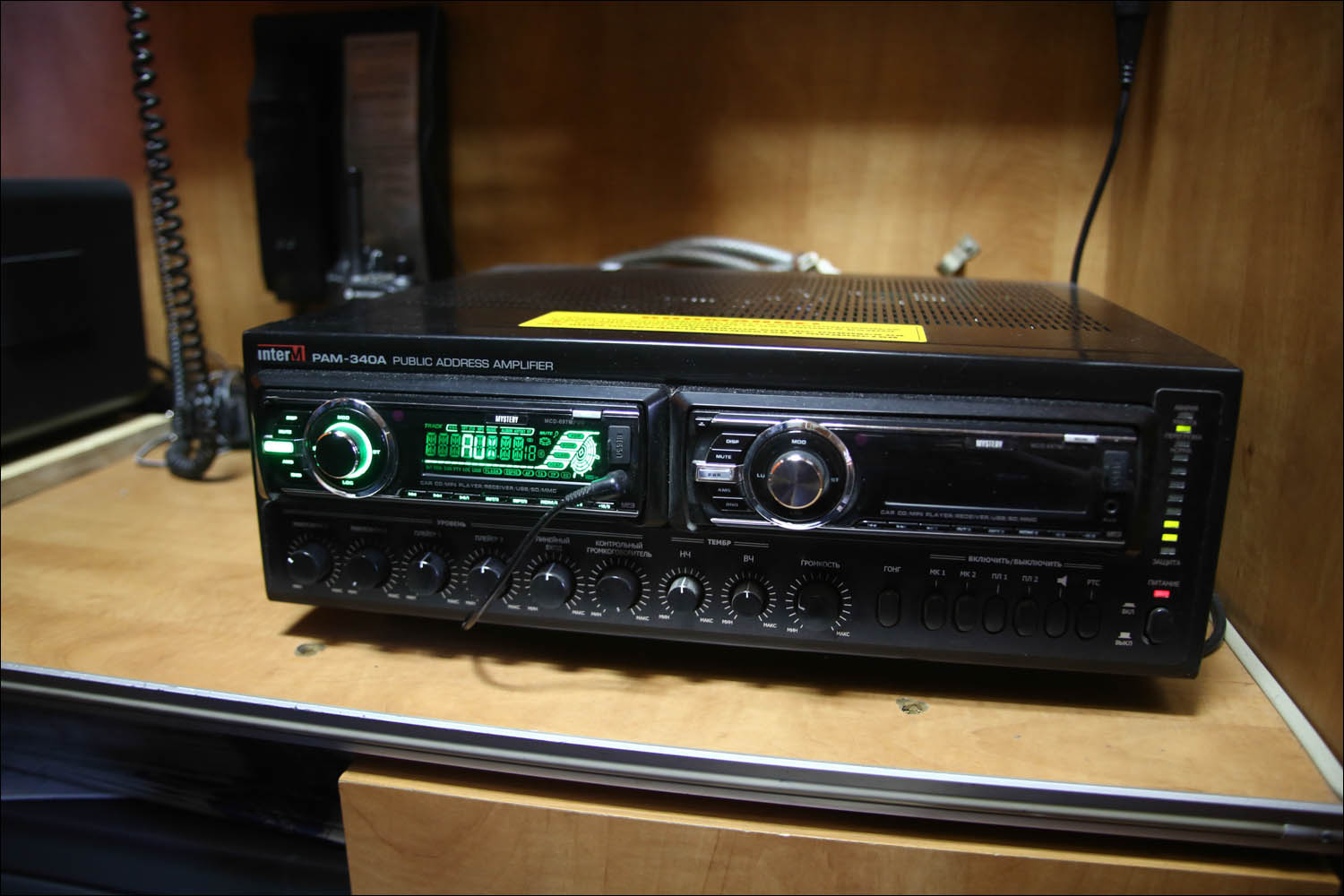
From here the radio broadcasts. In Megapolis, it’s its own, that is, not a broadcast recording, but a set of its own programs. Among other things, there is calm music and learning English.
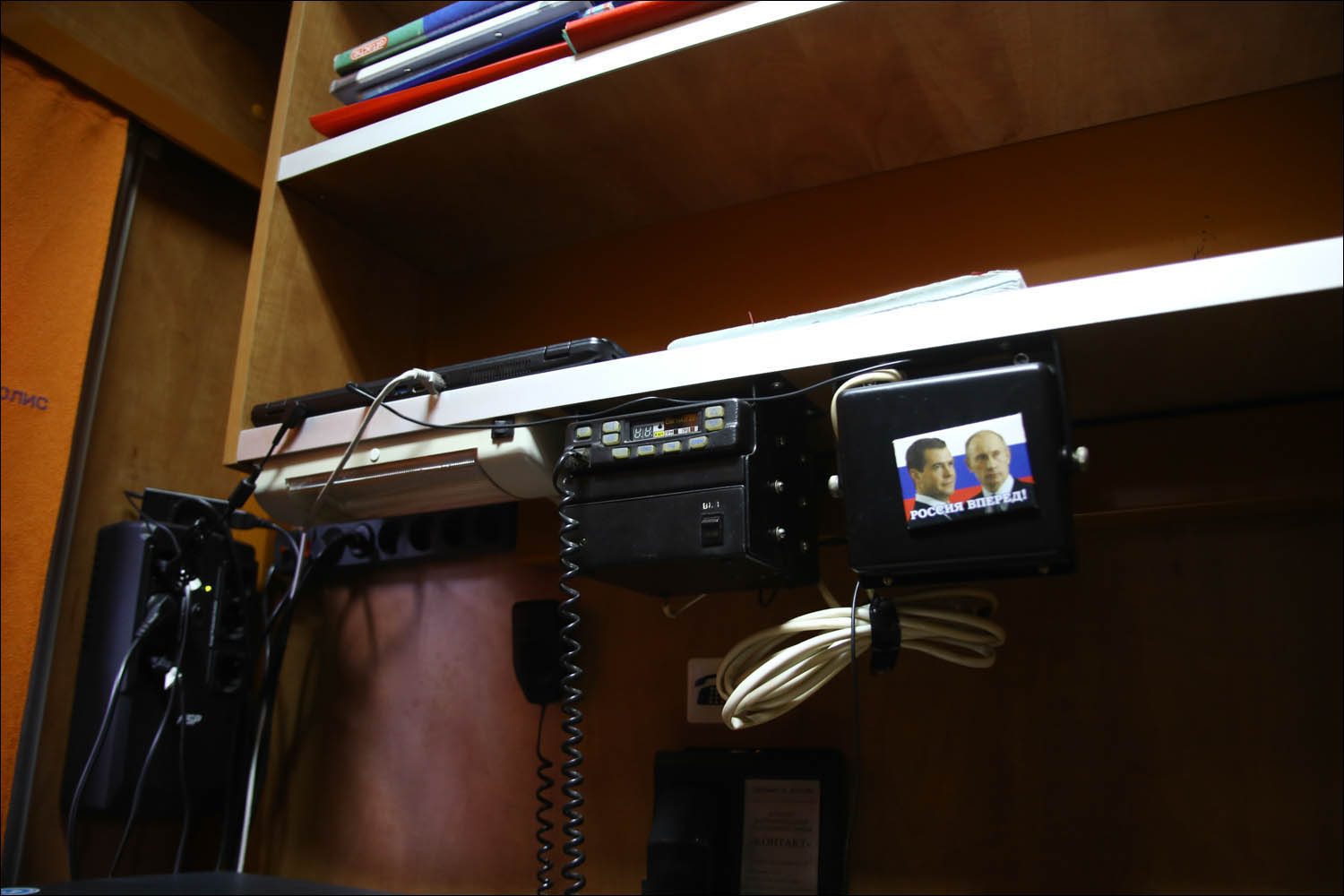
But that’s why the place is called a “radio coupe”.
Here is the compartment of the conductor. It is usual, as on all TVZ cars of these years (on modern equipment it looks different):
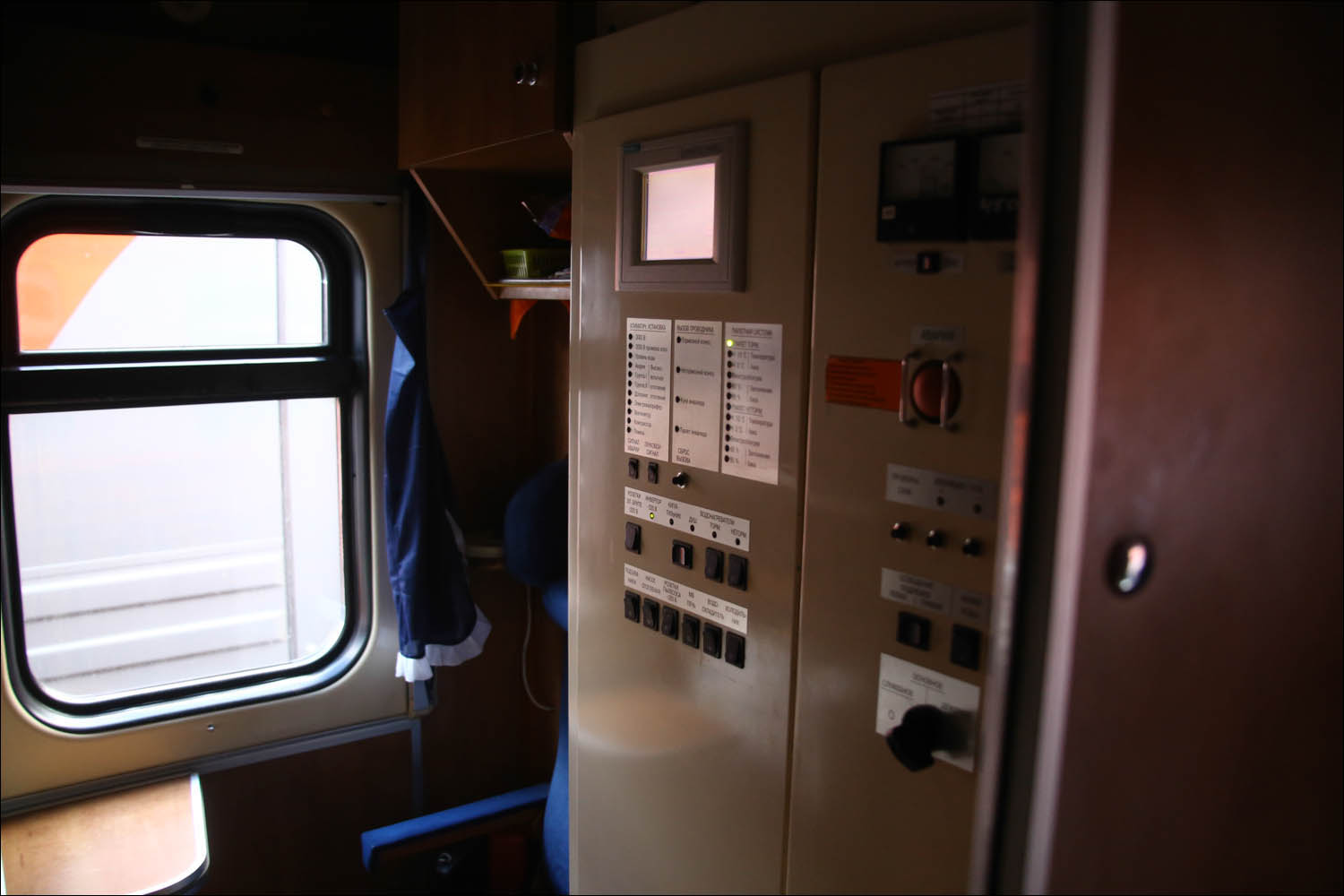
Of course, the workshop:
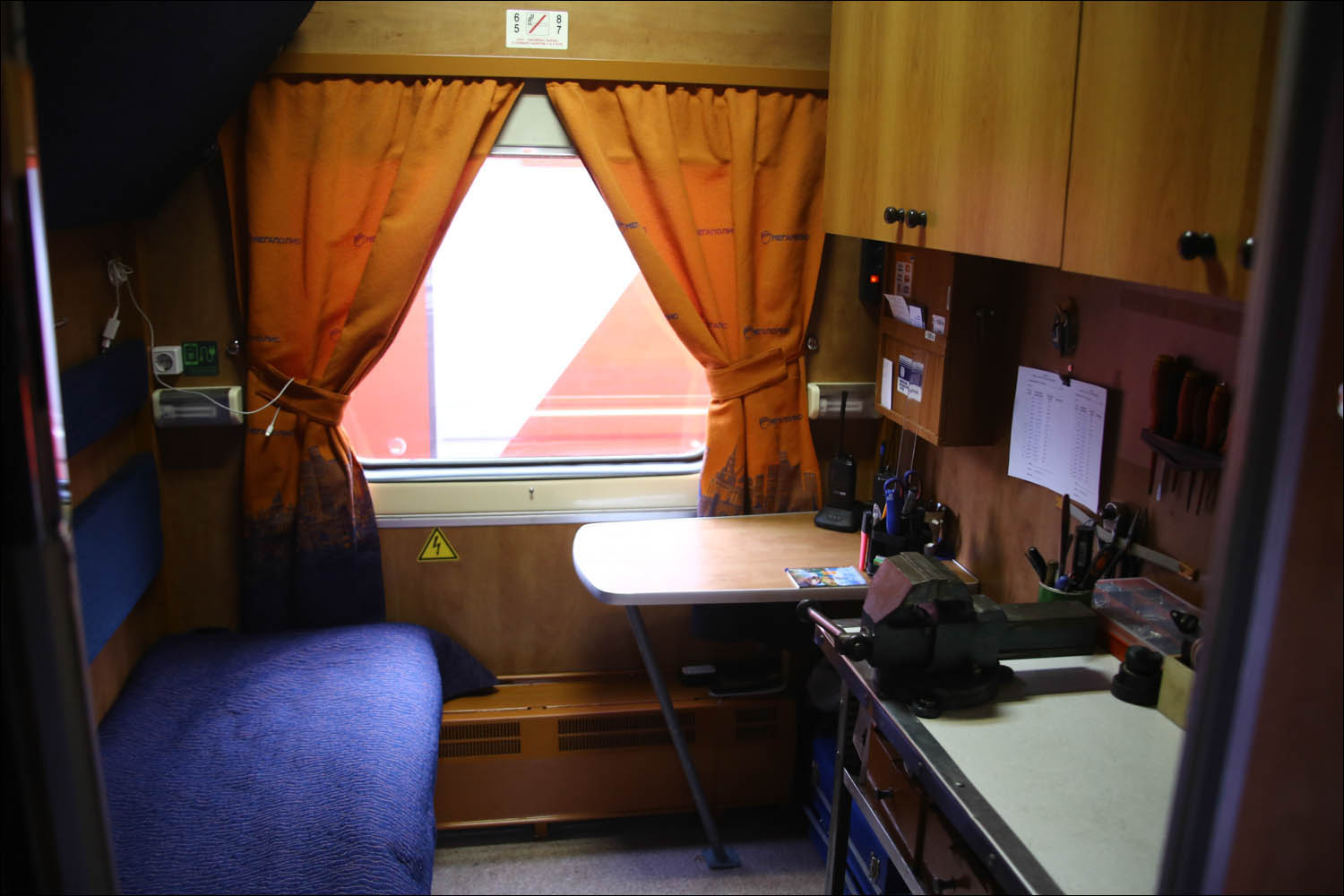
In general, it’s an electrician’s compartment, but at Megapolis, an electrician is more like a shipborne mechanic on a list of duties. That is, repairs everything that can be repaired on the road.

Basically, of course, monitors the electrical equipment of the train. For example, if a lamp burns out somewhere - who will change it? Of course he is. Do not ride the passenger in the dark.
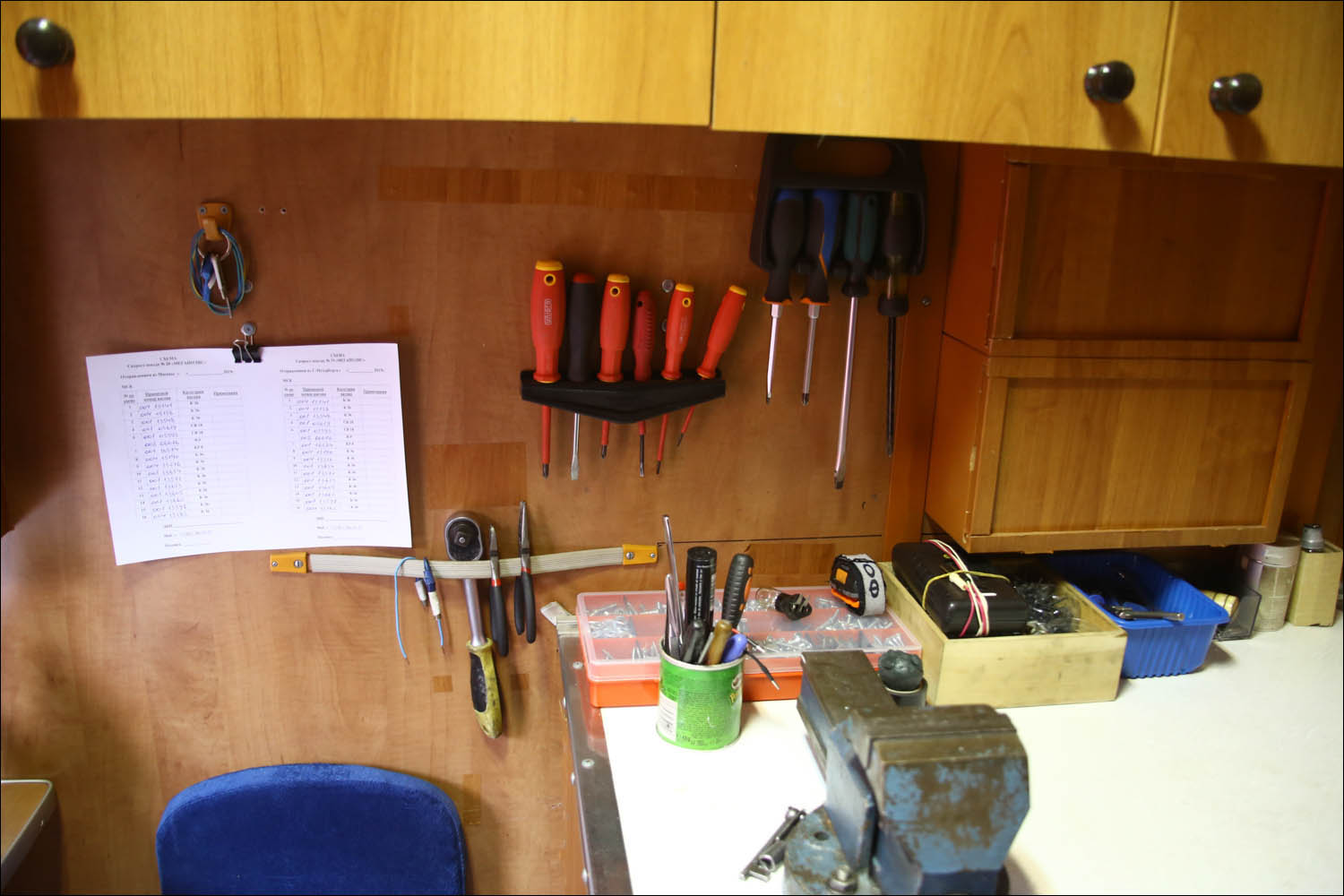
But there are more tragic situations. For example, a clogged toilet, which you can try to solve without a locksmith from the depot.
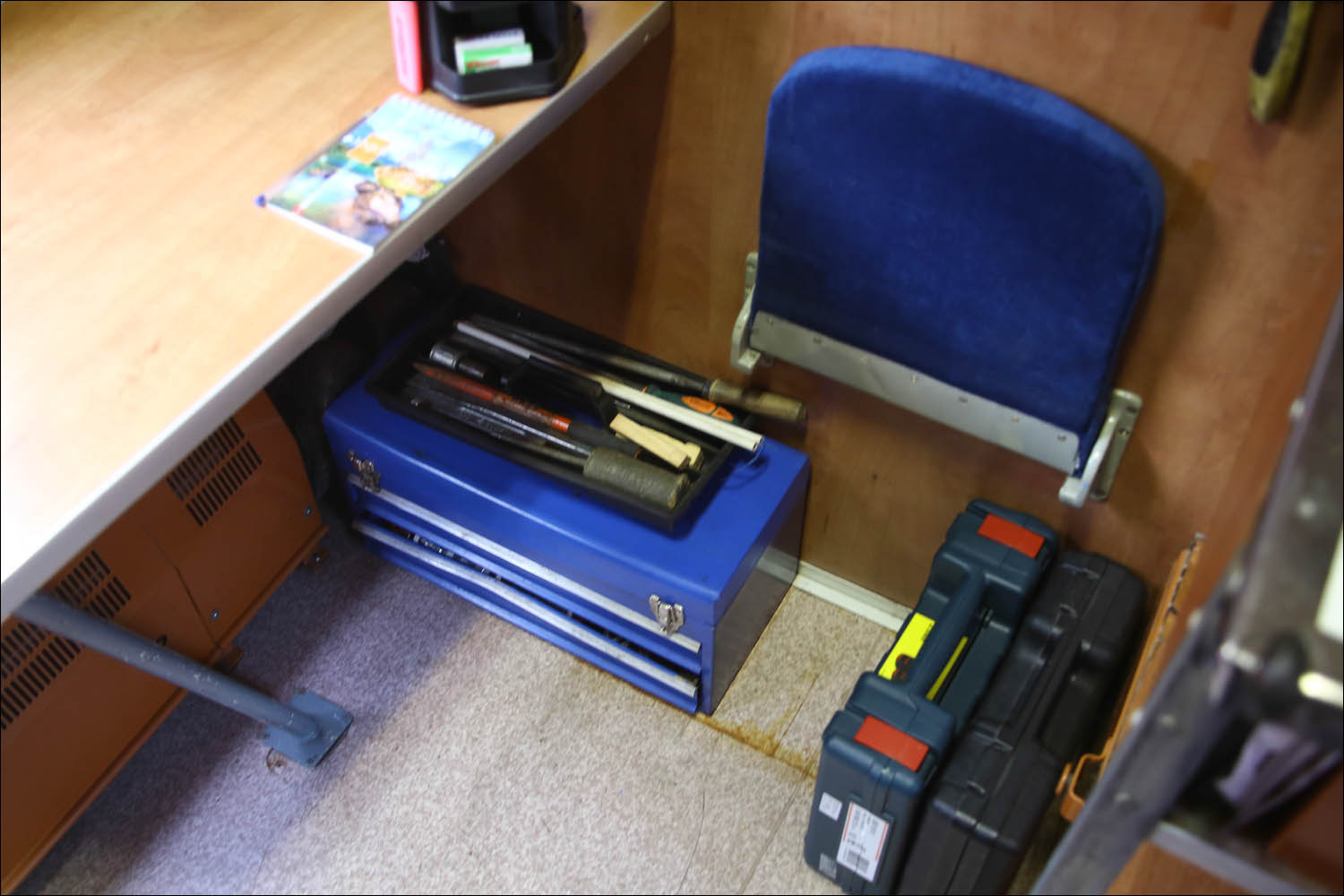
Or a broken castle in the compartment: the larva changes in a matter of minutes.
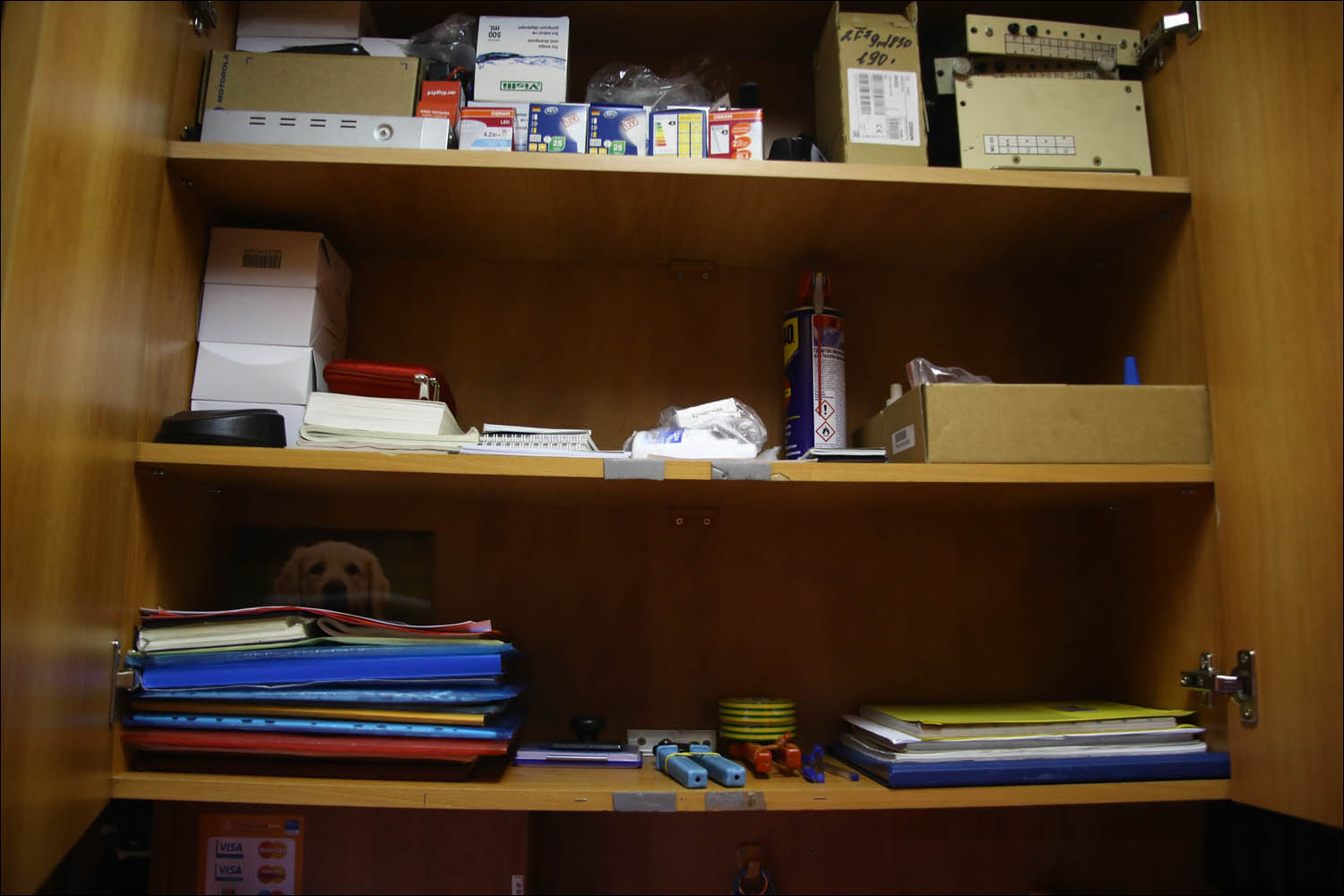
Here, judging by the spare parts, it is clear that the hooks for clothes in the compartment are torn off quite often:
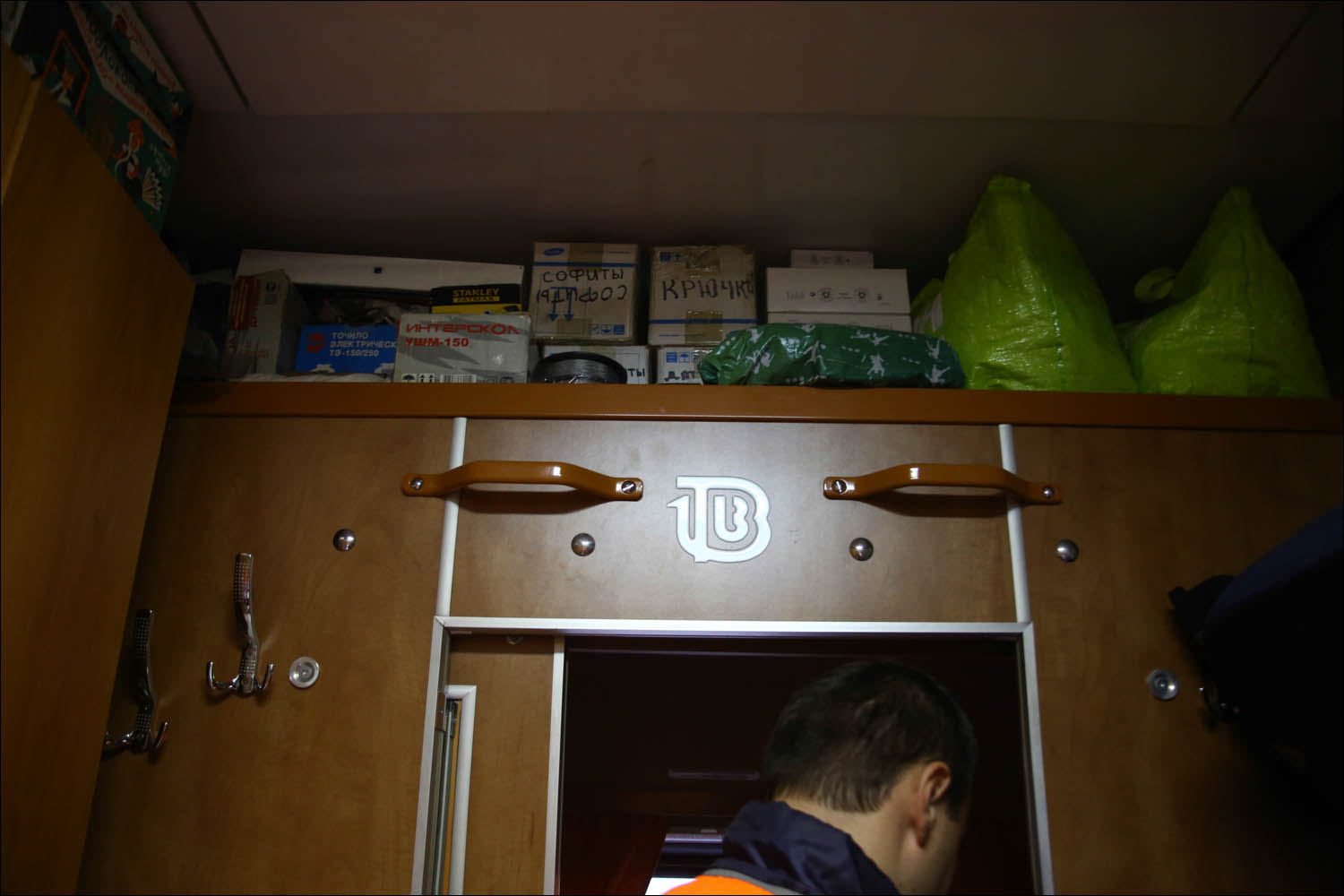
By the way, we already talked about the case when the Chinese locked themselves in the compartment on the upper bolt and could not get out, and then began to break the compartment from the inside. Then it was the electrician who removed the door (with damage) and released them. The Tverskaya Express coupe restored at its own expense, they did not sue the fraternal people. There were still seats on the train, so passengers continued on in other compartments.
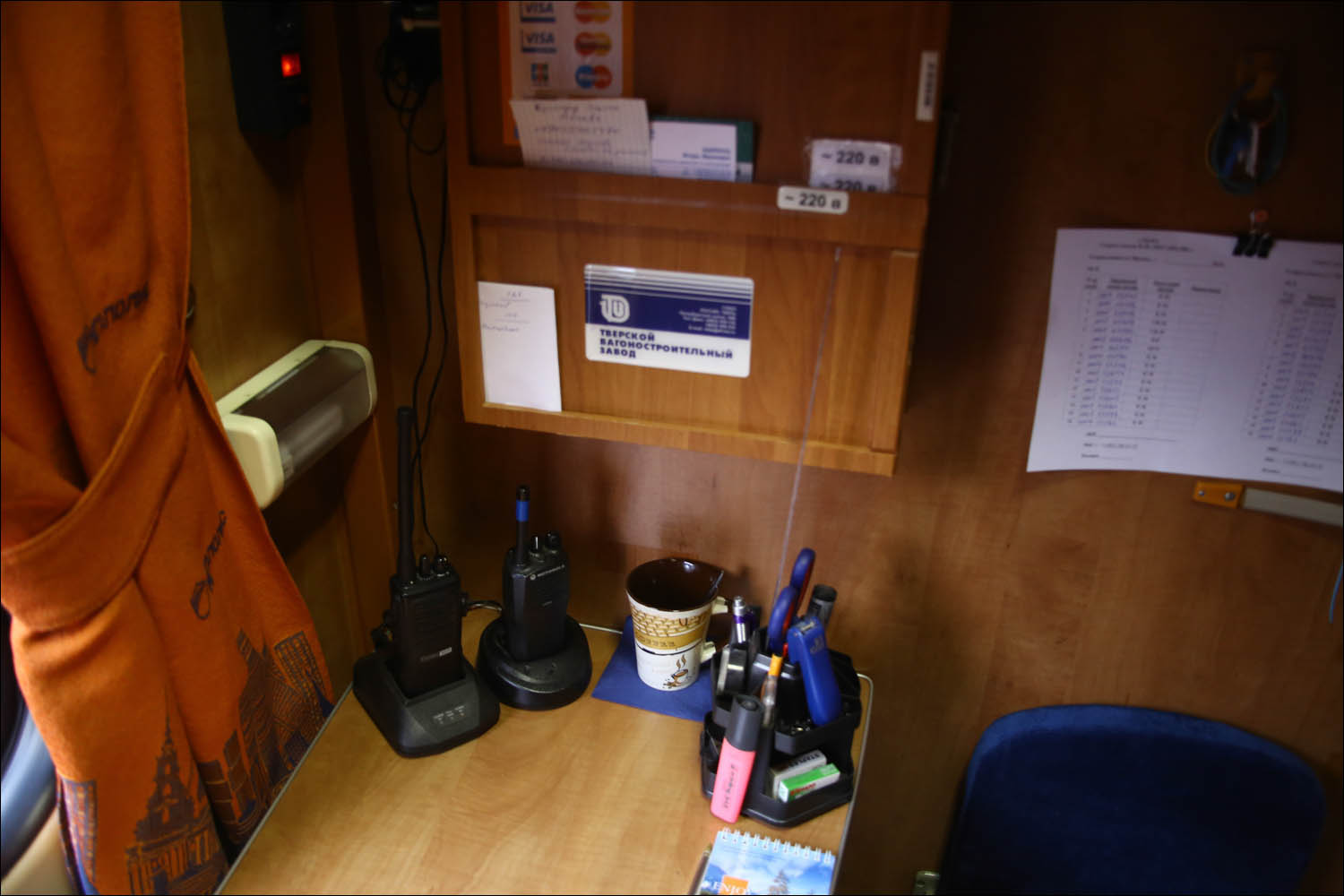
Also, an electrician maintains subcar electric power generators (those that work from wheel rotation): you need to switch to them or turn them off if necessary. Well, in general, monitors electrical panels.
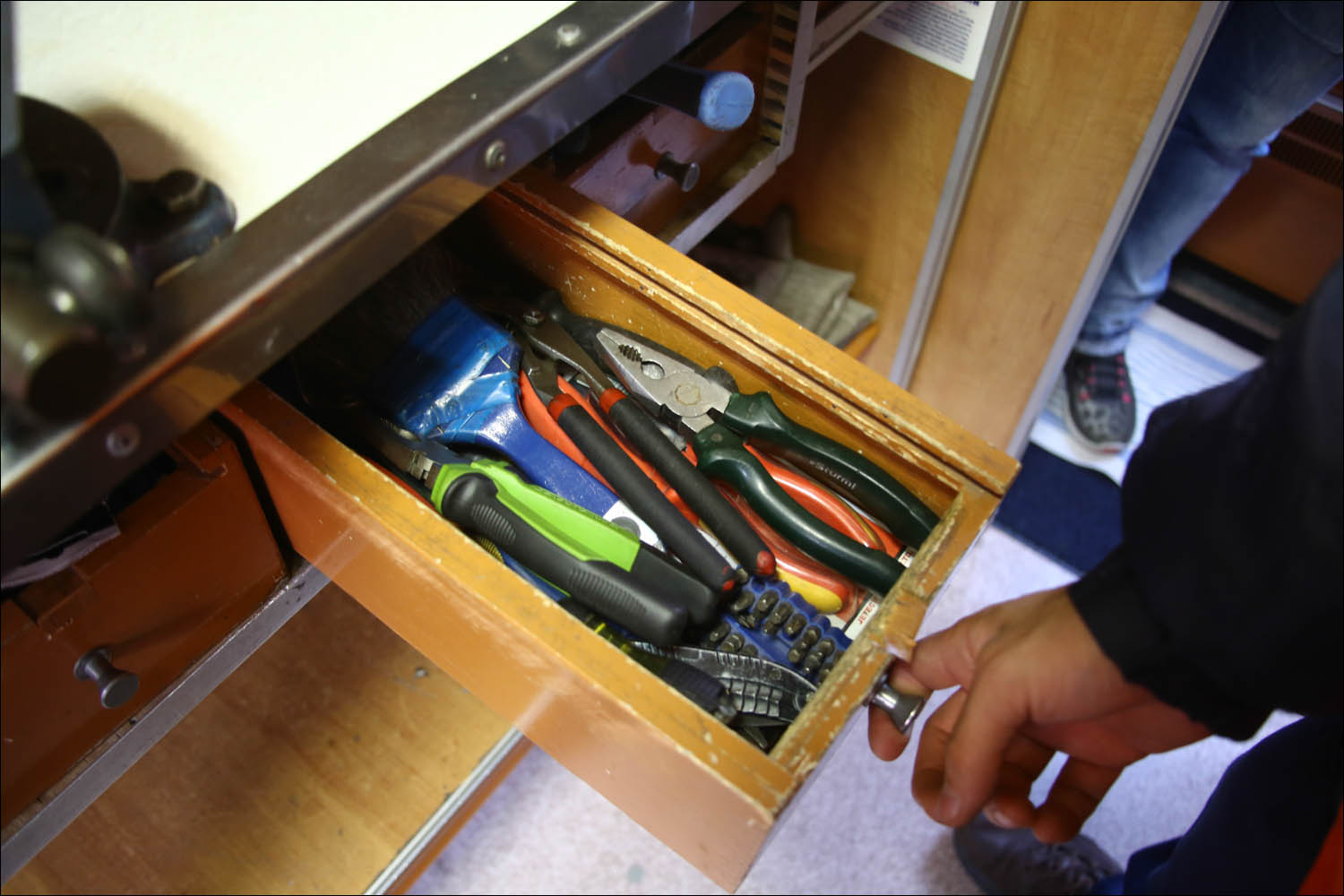
It is clear that a longer and deeper repair is possible in the depot, but, firstly, the depot is only on one side of the route, and secondly, it is much more convenient to equip a workshop in the train and repair things directly on the road than on the ground. Apart from soldering: soldering is better at stops.
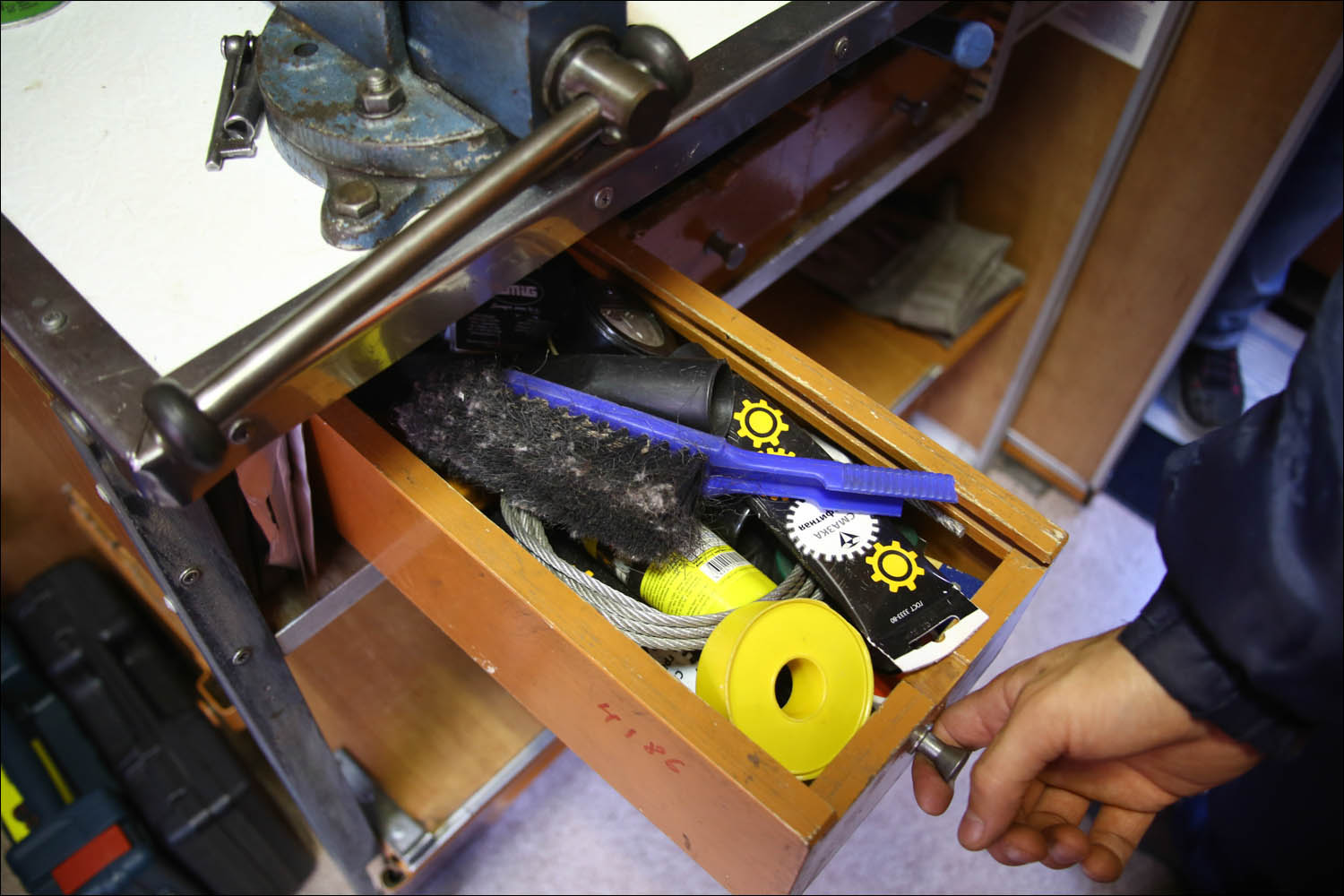
The train head compartment is no different from a conventional compartment. Further there is a small compartment with a shower (almost every head carriage has a shower in one form or another). Passengers objectively need it on the Trans-Siberian train (there is an entrance fee, 150 rubles, and you can still buy bath accessories), and the shower is free at Megapolis. Because there have been less than a dozen visits by passengers to this compartment in the last couple of years. The staff has a change of 14 days, so showers are very important, although you can take it at the station.
The fifth and sixth coupe in Megapolis are ordinary passenger coupes.
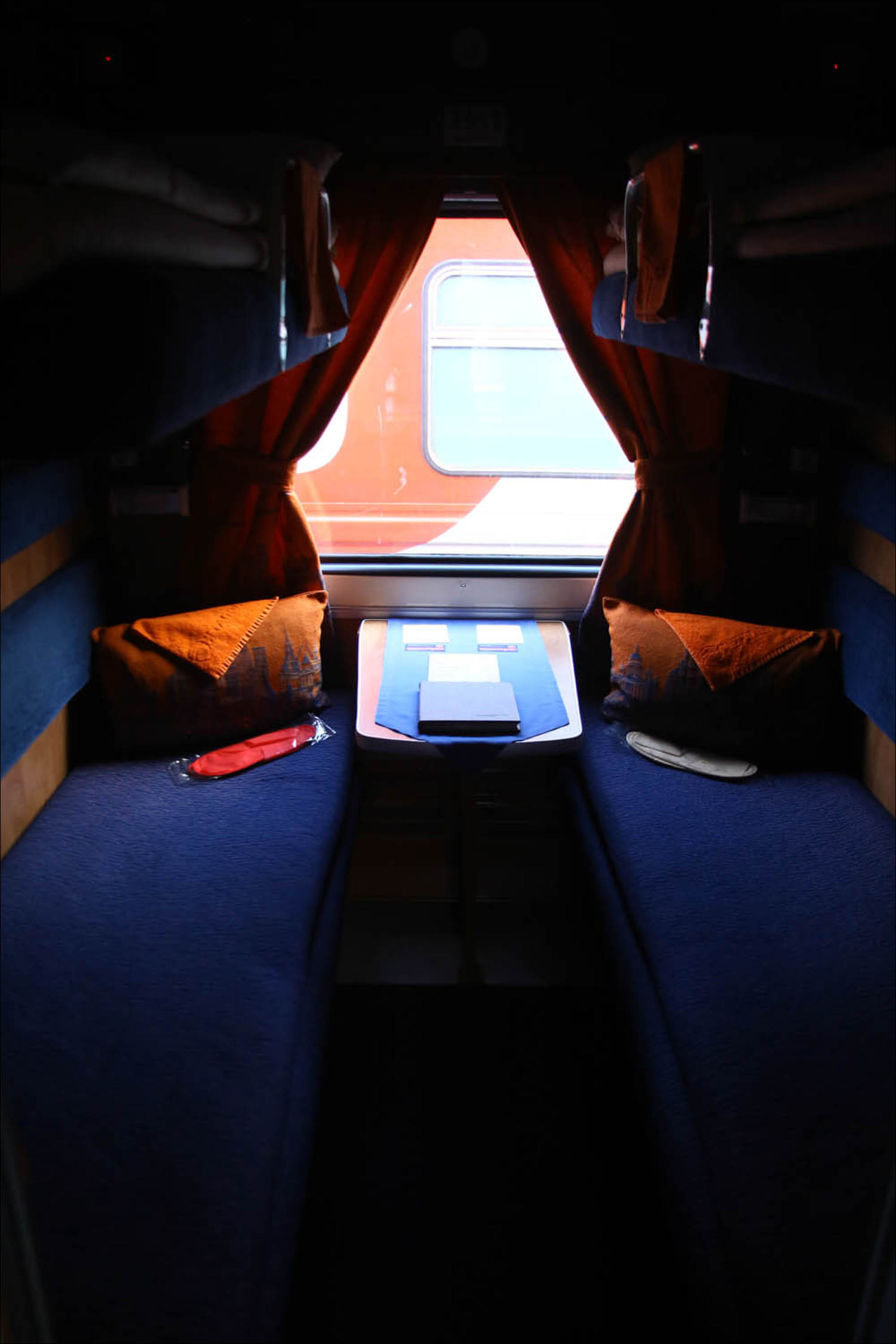
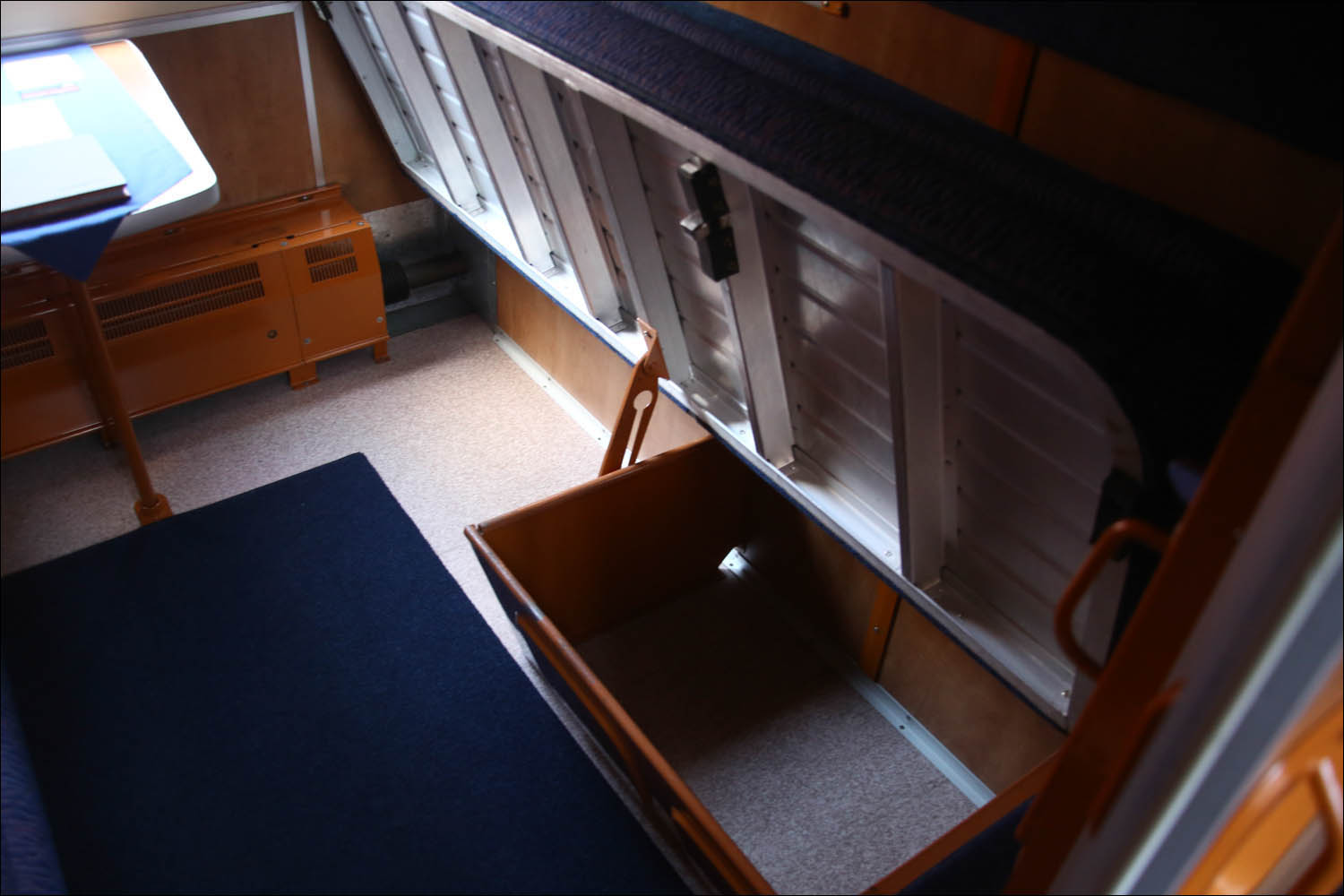
Other trains have approximately the same pattern, but there may be more or less seats. An important difference is the following: in Megapolis these places are protected to the last for club members. If you have their card with any amount in the account - you can reserve a place "for your own", which is not visible in the ACS "Express-3". Seats go on regular sale nine and six hours before the train departs and can be taken as usual in the last hours. Other trains often do not have their own club, so you can buy a ticket in a compartment in the head coach in advance. About this there is a separate life hack. To find out which car is a staff car, you need to check the availability of seats on the official website of Russian Railways. One of the cars can be duplicated. Here, for example, two ninths in the FPK train:

This is because in the current interface a ticket for a disabled person and an accompanying person is shown separately, and separately, ordinary passenger tickets in the same carriage. Coupe for the disabled is now only in the headquarters of the train. Therefore, if you want to ride in it, you can buy a ticket in the “second ninth” carriage.
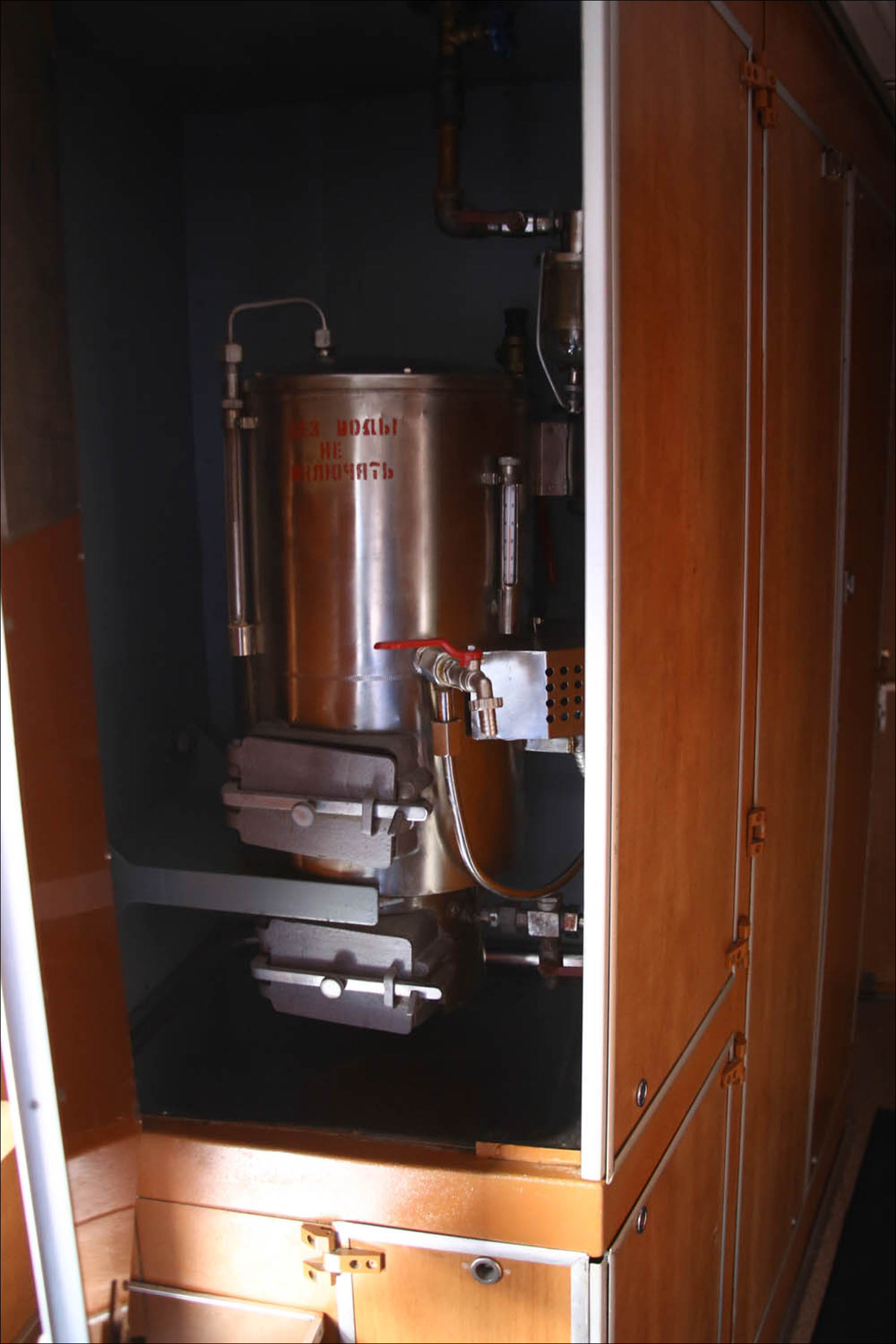
There is no separate compartment for employees of the Ministry of Internal Affairs in this particular headquarters car: the private carrier has its own security service. There are three people for the train, and, given the length of the flight, they do not need a separate compartment. Nevertheless, one of them can rest in a free compartment in the staff carriage or somewhere on the train, if required (the other two should be on duty at this time).
The conductor in the staff carriage is exactly the same in function as in other cars. In fact, there are always extra sweets and other cute little things.
Here, in the staff carriage, employees of the restaurant car rest. A restaurant car is usually located nearby.
In the radio compartment, it is possible to broadcast the entire train from the microphone along the audio highway. This is used for urgent announcements. There is also a connection with the train driver in the radio compartment: the locomotive crew and the train’s personnel (without traction) are two different teams with different submissions. Communication is needed in emergency situations. The most common contingency is medical care for the passenger. Usually a passenger comes to the conductor and reports that he is very ill. The conductor reports the data to the head of the train and to the guard (security officers are able to provide first aid). The train manager decides whether to inform the driver about an unplanned stop and request an ambulance call. For example, if a passenger cut a finger and the bandage from the first-aid kit was enough, then, probably, it is not necessary. And if he got poisoned and he feels really bad, he needs to. In general, the first-aid kit of the last revision is very small: in fact, a bandage and a tourniquet. The same nitroglycerin and validol are no longer there: it is believed that their use requires at least some medical education.
So, if such a case has occurred, then the driver contacts the dispatcher, the dispatcher finds out the best option by ambulance and sends the brigade to the next stop or in one or two, the driver is informed, he informs the train head. The train stops where the team arrived (even if this stop is not on the schedule), the patient is handed over to them.

Not always one train car headquarters. For example, the FPK has two-group trains, an example is South Ural No. 14 along the route Chelyabinsk - Moscow. In Ufa, a group of five to six cars is attached to it (or more, depending on the scheme). The second group from the point of view of the subordination structure is an isolated object, and there its head train rides there. It turns out that in one train there can be two chiefs - Chelyabinsk and Ufa, for example. Each is responsible for its own group of wagons. In terms of architecture, these are two different trains that travel one after another and are united by a common traction.
Alla Petrovna Shchepetova and Oleg Anatolyevich Drygin from the Tver Express were with us. You can read about their train and its features in a last post about the railway . And here are our other posts about the railway: a retro-train with a steam locomotive , FAQ about the work of the assistant driver , about the Megapolis train , what is interesting in the train driver’s cabin , features of the Universiade transport , in the Aeroexpress depot , about the transsib , Grand Express , what are the trains , the energy systems of the cars how passenger cars are arranged , how cars are assembled , how they evolved , about the Leningradsky station , about locomotives , about old cars . Great FAQ about long-distance trains and unobvious rules .
The other day, TVZ announced that new headquarters cars 61-4529 of the development of 2019 will go into the series.
Here are the images from the press release: 
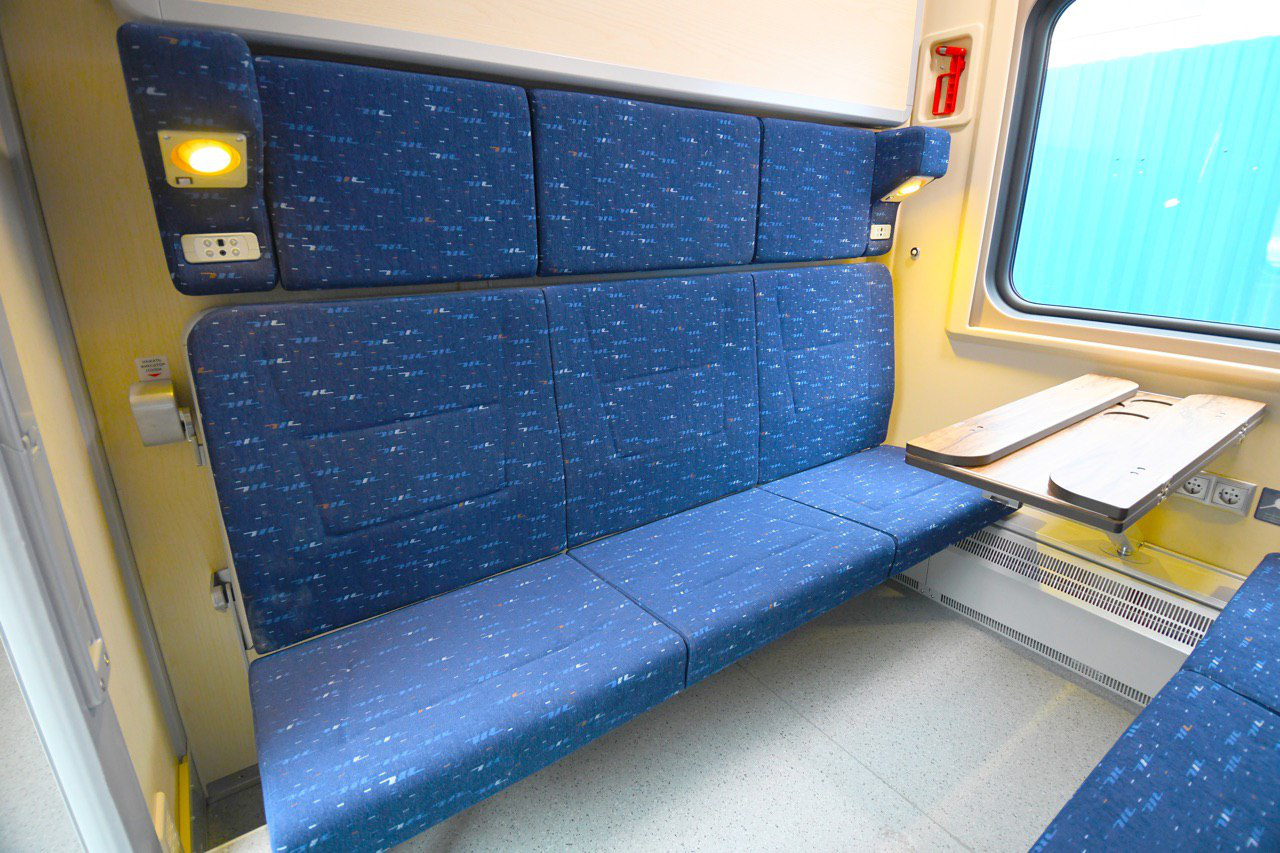
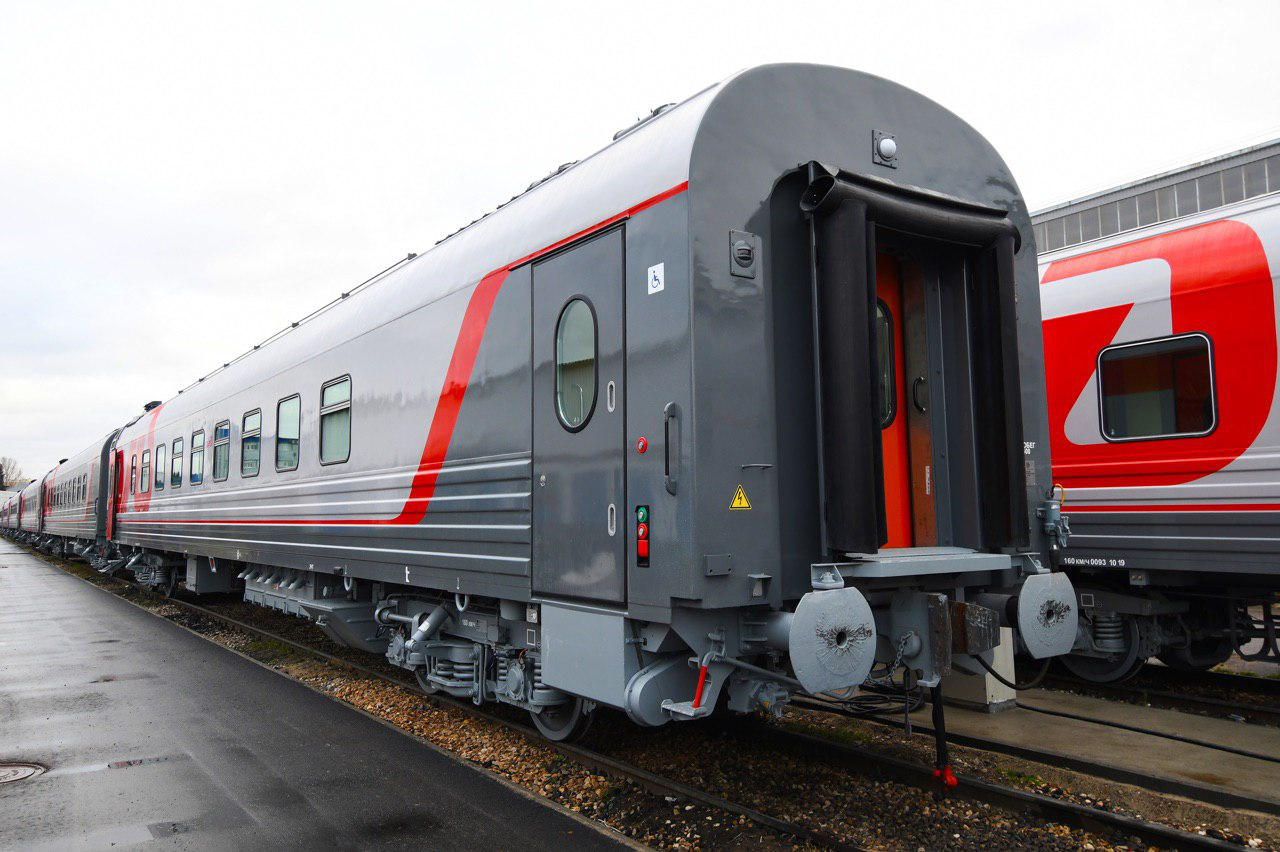



There will be control of the subsystems of all cars (in recent years, a lot of data from the nodes is given to the on-board network), there will be two places for passengers with disabilities and two for accompanying people, there will also be an emergency exit with an inflatable descent. There will be compatibility with trains with double-wagon trailers; speeds up to 160 km / h are supported. All modern features are also on board: video surveillance, USB and 220 V sockets, safes with electronic locks for the compartment.